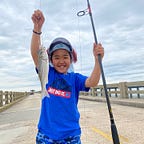The Importance of Living Organisms in the Chesapeake Bay
The Chesapeake Bay is one of the largest estuaries in the USA. The Chesapeake Bay is 50% salt water and 50%fresh water. The Chesapeake Bay is also a 64,000 square-mile watershed.The surrounding watersheds and the many different varieties of living organisms make up the Chesapeake ecosystem. These many organisms all help each other to survive and grow in the Chesapeake Bay. The loss of the Chesapeake Bay ecosystem is due to human factors, but mainly habitat-loss. Forests are essential to the bay’s health because they act like giant sponges that suck in pollutants and nutrients so that harmful pollutants don’t get into the bay. The forests can reduce the amount of harmful pollutants flowing into the Bay’s water by 30–90%! The trees help buff the water system by about 60%. Through attenuation, the trees, roots, leaves,and soil traps pollutants that are in the air. The forest can take in about 85% of the nitrogen that falls into the bay. This prevents harmful nitrogen from entering the bay. Any excess nitrogen that falls into the water makes the algae rapidly grow, which isn’t good because it blocks the sunlight from reaching the underwater vegetation. This causes the underwater oxygen level to decrease. This leads to death of a lot of marine life. The trees are so important because they create the oxygen we breathe by absorbing carbon dioxide.The Chesapeake Bay forests create a habitat for the woodland creatures and shade for the water. This means the trees can help regulate the temperatures in the water.
The rivers and streams provide fresh water and a habitat for the aquatic creatures such as catfish, bass, trout, and sunfish.The rivers and streams also provide habitat for fish that go from ocean to streams and streams to ocean. Some examples include Striped Bass, Shad, and the Atlantic Sturgeon. Many creatures find oyster reefs as a good habitat because of the nooks and crannies. At the bottom of the Bay there is usually soft sand but the oyster reefs are the biggest source of hardness in the Bay. The Chesapeake Bay shoreline is mainly lined with sand beaches and marshal flats. The beach is a hard habitat to live in because of the wind, waves and heat. Also, many tourists who visit the beaches can pollute the surrounding area, making it more difficult for organisms to thrive.
Marshes and wetlands transition between land and water and are home to more than thousands of aquatic creatures including worms, periwinkles,and mussels thrive. About ⅔ of the nation’s commercial fishing depends on the wetlands as a nursery for aquatic organisms. As you can see, there are many reasons in which the aquatic creatures of the bay benefit the environment and humankind.
MLA Citation:
“Ecosystems — Chesapeake Bay (U.S. National Park Service).” National Park Service, www.nps.gov/chba/planyourvisit/ecosystems.htm. Accessed 18 Jan. 2021.
Source Link:
Kyle Lee(kylelee.earthminions@gmail.com) is a 5th grader at Bellows Spring Elementary School. He loves to learn about ecosystems and he enjoys being with animals. He is passionate about animal conservation and climate change. In his free time he enjoys fishing, hiking, and playing with his cats. (Elkridge, MD)
